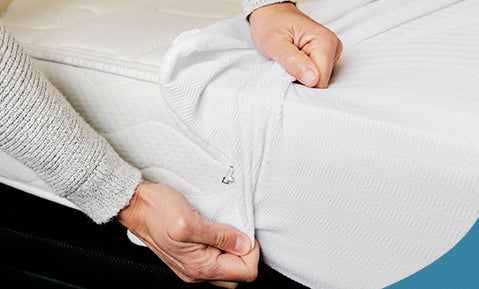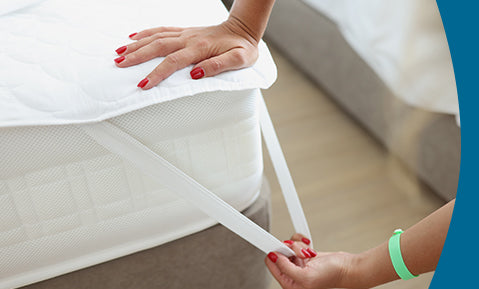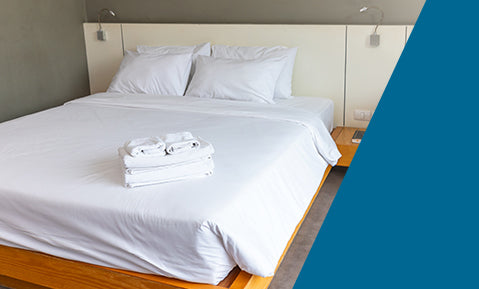
Getting the right amount of quality sleep is vital for feeling good and staying active, however many in-fact struggle (to get the right amount of sleep).
Over one-third of people in the United States sleep less than 7 hours each night and nearly half report having trouble falling or staying asleep, as per a recent report.
Breathing exercises are an easy and simple way to manage stress and feel more relaxed. It will help you wind down before bedtime. Adding breathing and other relaxation exercises can help you fall asleep faster and sleep more soundly.
Like other healthy sleep habits, breathing exercises will need patience and practice. Learn about several breathing exercises that may help you improve your sleep, and incorporate breathing exercises into your bedtime routine.
Belly Breathing

Belly breathing is also known as a diaphragmatic or abdominal exercise that encourages slower and more relaxed breathing. Most people get accustomed to taking Shallow breathing using muscles of the neck and chest.
It is more in times of stress. Belly breathing will encourage the diaphragm, an important breathing muscle located at the bottom of the chest. Belly breathing can be performed in the following steps:
- Sit or lie down in a comfortable position with one hand on your chest and the other on your belly. It should be slightly above the belly button.
- Take a deep breath through your nose ensuring that your hands are on your chest while the one on the belly Rises with the breath.
- As you exhale, allow the hand on your belly to slowly fall.
- Count each breath, feeling your hand rise and fall while breathing with only your diaphragm. After twenty belly breaths, you can relax and breathe normally.
Bhramari Pranayam

Bhramari Pranayam is an exercise based on the yoga practice of breath control. Bhramari is a type of Pranayam in which a person covers his eyes and ears while producing a Humming or buzzing sound. It involves several steps:
- Sit in a comfortable position while placing your thumbs over your ears to block outside sound.
- While your thumbs cover your ears, place your index fingers on your eyebrow and use the remaining fingers to keep your eyes closed.
- Take a deep inhale, slowly exhale through your nose while making a buzzing or Humming sound and focus your attention on the areas between your eyebrow.
- Repeat the breathing exercise as needed for relaxation.
4-7-8 breathing
It is also known as relaxing breathing and it is a rhythmic breathing technique based on Pranayam practice. This breathing exercise involves a characteristic pattern of inhaling, holding the breath, and exhaling to reduce anxiety.
You can try the breathing exercise using five steps.
- Empty your lungs by letting your leave separate and audibly exhaling using your mouth.
- Keeping your mouth closed, inhale quietly using your nose while counting through 4.
- Exhale slowly using your mouth for a count of 8.
- Repeat this cycle about six times while returning to normal breathing.
Box breathing
It is a technique that combines breathing activities with visualization. As the name suggests, box breathing will involve visualizing a box with 4 sides today mind the person performing the exercise of the pattern and length of each breath.

Use these simple four steps for this exercise
- Exhale air from your nose – Count from 1 to 4.
- Try to hold your breath - Count from 1 to 4.
- Exhale the air now slow from the mouth- Count from 1 to 4.
- Once this step is done (exhale), hold your breath- Count from 1 to 4.
- Repeat
Alternate nostril breathing is another variation of Pranayama. The exercise involves pinching one nostril at a time to help you control your speed and pattern of breathing.
- Block your right nostril using your right thumb.
- Block your left nostril with your index finger while holding your breath for six seconds.
- Unlock your right nostril and breathe out through your right nostril for six seconds.
- Breathe in with your right nostril for about six seconds.
- Unblock your left nostril and breathe out through your left nostril for about six seconds.
- Repeat this for several rounds of breathing.
Guided imagery
Guided imagery combines a breathing exercise with calming visualization. If you want to practice this exercise, consider the type of imagery that you may find calming.
Once you have selected an image, you can practice breathing exercises like diaphragmatic breathing while envisioning your chosen scene. If you have trouble coming up with a relaxing image, you can find it helpful to use a podcast or video that offers guided imagery for sleep.
If you want to further deepen your sense of relaxation, you can continue Deep and slow breaths as you focus on each of your five senses. You can have feelings that you would encounter within the visualization.
Add Breathing exercises to the nightly routine

Experts claim that breathing exercises become more effective with practice. Hence, persistence is the key when they incorporate exercises into your nightly routine. Some tips that can help you get the most out of the night-time breath work.
- Prepare for setbacks: It is normal to have setbacks when developing a new habit. You can set aside time each night to practice breathing exercises. You can recommit to your goals if you find yourself encountering a roadblock.
- Try another healthy sleep tip: Relaxation exercises Are just one night-time tool that can help you improve your sleep. Consider adding some other aspects of healthy sleep hygiene to your nightly routine too. It can help you maintain a consistent bedtime and avoid large meals late in the day.
- Talk to your doctor: While breathing exercises can calm your nerves and help you sleep, relaxation is not a substitute for talking to a doctor or sleep specialist. If you are having persistent difficulty staying and falling asleep, it's vital to contact a healthcare professional for support.
Conclusion
Whatever form of breathing technique you prefer, the evidence is clear that exercises can help you:
- Relax
- Sleep
- More naturally and effectively breathe
Before you know you will feel sleepy, with so many of options.












